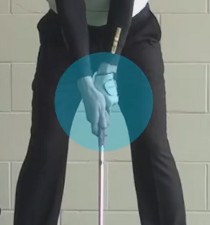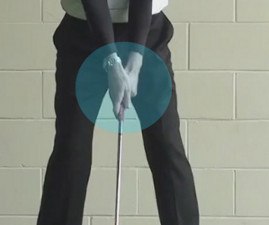1 of 7 | < Previous Next >
- Two – Your grip is neutral.
- Three – Your grip is strong.
- One – Your grip is weak.

The gripis golf’s most important fundamental. Your hands’ positions on the club affect every square inch of the swing.
[Note: The following tips apply to all three common grip styles (interlocking, overlapping or baseball-type) and are written for right-handed golfers. Left-handers may simply reverse the left-right language.]
The left and right hands should directly face each other when gripping the club. To check, take your normal grip, then unfold the hands until each lies flat against the handle.  Practice by gripping a ruler or similar object so that the palms are in direct opposition.
Practice by gripping a ruler or similar object so that the palms are in direct opposition.
The next step is getting the hands situated properly. The ideal position is called “neutral” because the hands are centered on the shaft in relation to the clubface. Non-neutral grips are called “strong,” with the hands rotated to the right of center, or “weak,” when they’re rotated left.
Here’s a test to determine if your grip is neutral, strong or weak. Take your grip and set up as though playing a shot. Look at the back of your left hand – how many knuckles do you see?

If the neutral grip is considered ideal, the weak grip is least desirable as it causes an open clubface that often leads to a slice.
Many golf instructors advocate a slightly strong grip, which promotes a fluid release through impact and a powerful, right-to-left ball flight.
A final note: Be careful not to grip the club too firmly. On a scale of 1-10, with 10 being extremely firm, aim for a grip pressure around 5.
Your grip should be the same with the hybrids, driver, fairway woods, irons and wedges.
1 of 7 | < Previous Next >





